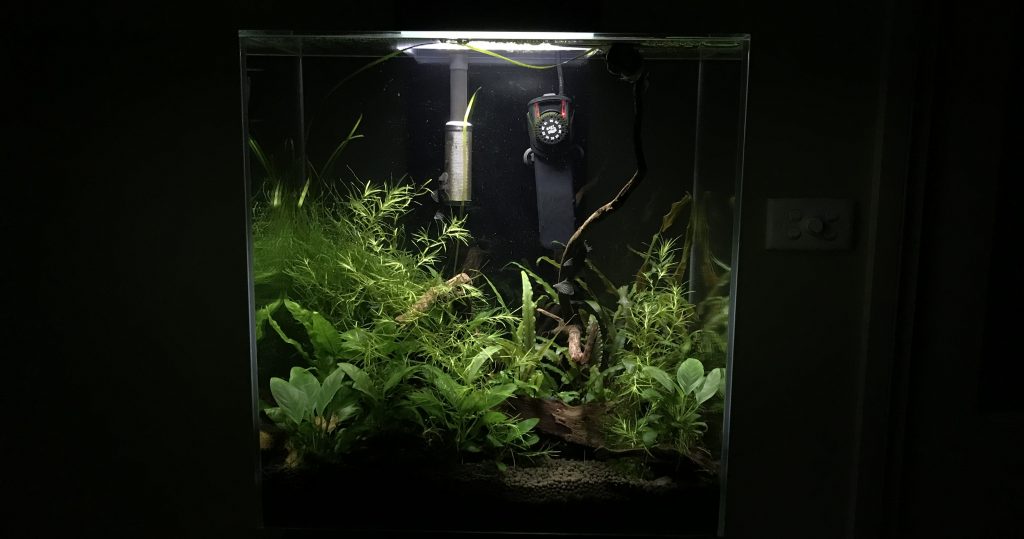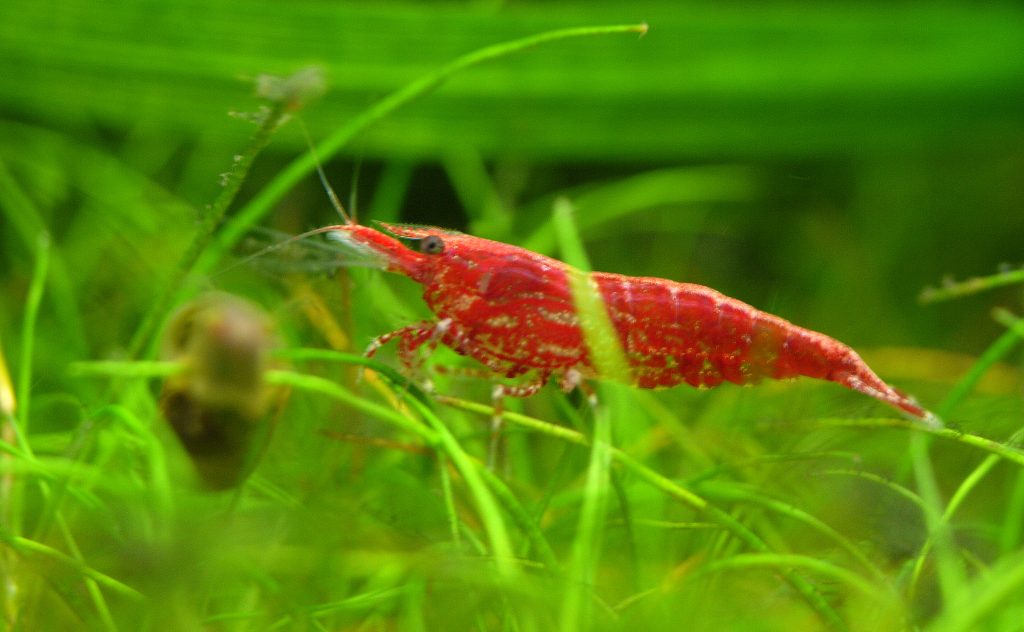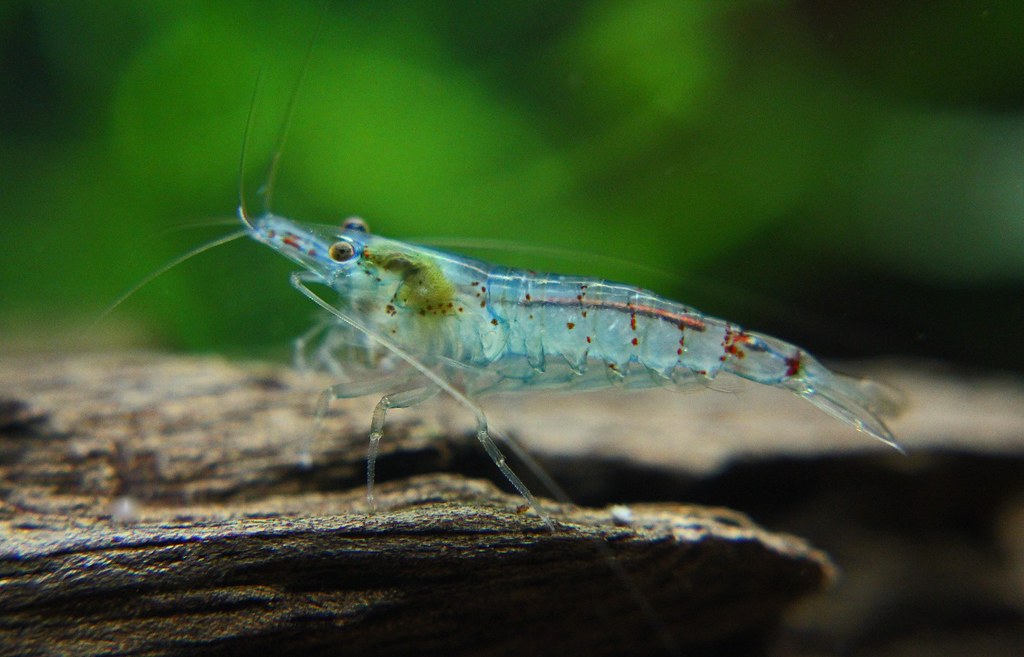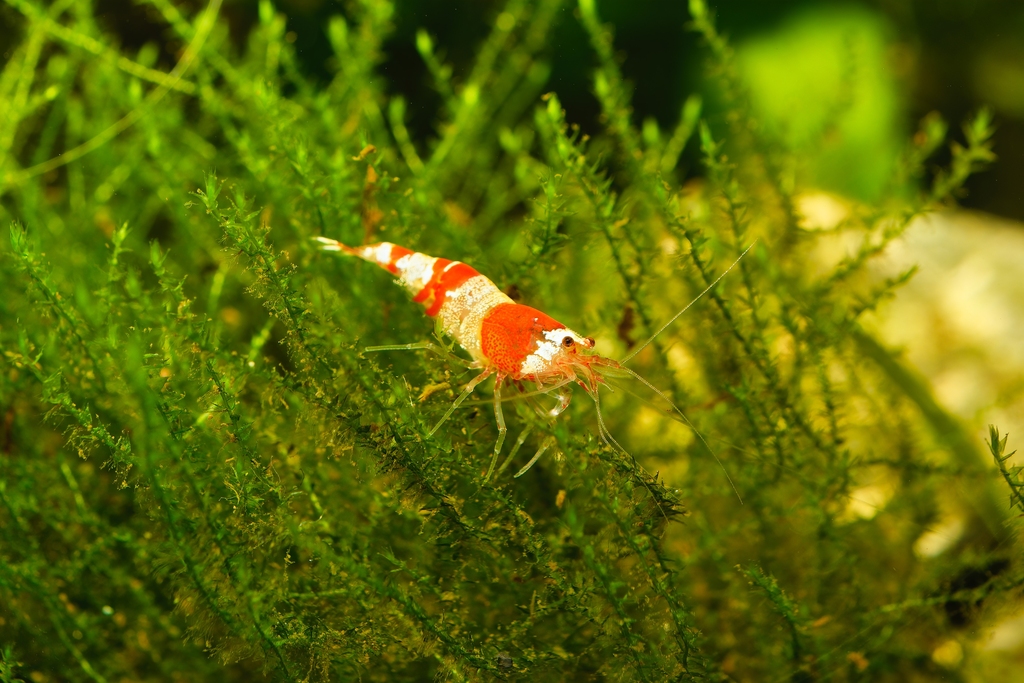Dwarf shrimp are becoming increasingly popular thanks to their straightforward care requirements, diverse range of colours, and tolerance for small aquarium. They’re a perfect inhabitant for small ornamental aquariums that can fit onto a shelf or a desk. In this article, we look at some of the popular dwarf shrimp varieties and what’s involved in setting up a shrimp tank.

The different kinds of shrimp
In Australia, the most commonly available shrimp species is Neocaridina davidi, which is commonly known as the Cherry Shrimp. They have been selectively bred to produce a wide range of different colours, including red, yellow, blue, green, black, purple, white, brown, and even translucent.
The Bee Shrimp, Caridina cantonensis, is another popular choice. They’re a little bit more challenging to keep than the cherry shrimp, but are still quite managable for a beginner. They’re recognised by their striking striped colouration, and have been selectively bred to produce a myriad of different colours, including orange, red, and black.
Less frequntly seen than the previous two are Tiger Shrimp caridina mariae, which are closely related to the bee shrimp. In fact, they were considered to be the same species until as recently as 2014.

Beyond these species, there are dozens of additional species and hundreds of variations that are found in the aquarium trade, and new ones are popping up all the time.
Setting up the shrimp tank
Shrimp are pretty tiny, so they don’t need a very big aquarium. Tanks sold as “nano tanks” are usually perfectly sufficient, as long as they’ve got lighting, filtration, and heating.
The exact water parameters vary depending on the specific shrimp species being kept, but in general they like water that is:
- Slightly acidic with a pH beween 6.2 and 6.8
- Subject to frequent water changes
- Between 24 and 26 degrees
One of the best things you can you for your shrimp is to provide live freshwater plants. They provide hiding places, a source of food, and even work to remove harmful chemicals from the water.

Suitable shrimp tank companions
Shrimp make for a delicious and nutritious meal to a lot of commonly kept aquarium fish, so it’s important to choose their tank mates carefully.
Good choices include the small catfish in the corydoras and otocinclus families; common algae eaters like bristlenose catfish and dwarf plecos; most freshwater snails; small tetras such as cardinals, rummynose, and neons; and dwarf gouramis and other small herbivorous community fish.
Shrimp reproduction
Breeding dwarf shrimp is generally a simple process, however some species pose more of a challenge than others.
The first step is making sure the water conditions are right. The temperature, pH levels, water hardness, nitrate levels, etc, should be at the recommended levels, otherwise their breeding attempts may be unsuccessful.
Generally speaking, the water temperature should be increased ever so slightly to simulate the seasonal change that triggers their natural breeding impulse.
They’ll usually breed best when there’s darker secluded spots available in the aquarium. Live plants, rocks, moss, and driftwood can be used to create a dense habitat that makes them feel sufficienty protected.

Ongoing maintenance and care
Shrimp are omnivorous, meaning they will eat both meat and vegetation. In a planted aquarium, moss, algae, and decaying organic matter will provide a substantial proportion of their food intake. This can be supplemented with commercial foods such as shrimp pellets, fish flakes (crushed), and frozen foods like mini bloodworms and brine shrimp.
It’s important to perform weekly water changes to make sure excessive nutrients and toxins don’t build up in the water. This will help keep the water clear, the shrimp and plants healthy, and reduce algae growth.
Shrimp can be prolific breeders, so it may be necessary to occasionally reduce the number in the tank. You may be able to sell excess shrimp on classifieds websites or to your local fish shop, but if there’s no commercial demand for them, using them as food for larger carnivorous fish might be necessary.
